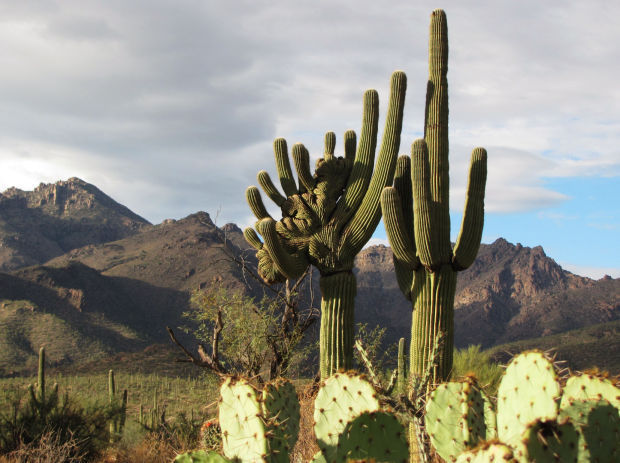Some people seek wealth. Others search for the meaning of life. Bob Cardell? He’s on a quest for yet another quirky cactus.
Cardell, of Tucson, is fascinated with those eye- catching, strangely shaped saguaros known as cristate, or crested, cacti because of their fan-shaped crests.
He has been striving for more than eight years to find and photograph as many crested saguaros as possible.
His total so far: 2,063.
That’s almost 700 more than when we last checked on his progress in 2009.
“I’m still after those crested critters,” said Cardell, 78, who is an avid hiker as well as a cactus chaser. “The appeal, for me, is finding them and letting other people know about the beauty of them. They’re just beautiful freaks of nature.”
He credits Tucsonan Pat Hammes with helping him find and document cacti in earlier years of the “crest quest.”
Search techniques include climbing to a mountaintop or ridge and using powerful binoculars to scan the desert.
Among the rarest of crested saguaros, Cardell said, are ones with a ring shape at the top — “kind of like a cup that might hold water.”
Cardell, who has given about 30 photo presentations to share his discoveries, and some of his fellow cristate aficionados post pictures of their finds at www.crestedsaguarosociety.org on the Internet.
where they grow
“But we’re kind of secretive about the exact location of the saguaros because we have some concerns about theft and damage by shooters,” he said.
Cardell has found crested saguaros in almost every part of the state where the species grows — from desert areas around Tucson to remote regions in Central and Western Arizona.
He said he has worn out two four-wheel-drive vehicles tracking down cacti and is putting serious wear on a third. He often treks far from roads to find and photograph the cacti.
Some crested saguaros, he notes, grow along city streets and in easy-to-reach spots on public lands. One convenient place to see one is along the short Bajada Loop Nature Trail near the visitor center in Sabino Canyon northeast of Tucson.
CAUSE IS UNCERTAIN
Several possible causes for the crests have been proposed — including virus, genetics, lightning, frost, microscopic insects and abnormal lateral growth tip division — but none of these has been confirmed.
“The cause of cresting is unknown, except that some kind of damage causes the usually tiny ball of meristem tissue to elongate into a line,” said Mark Dimmitt, a cactus expert and former director of natural history at the Arizona-Sonora Desert Museum.
“In the garden cockscomb, it’s genetic, but in most plants it doesn’t seem to be inherited. I’ve never seen any significant scientific literature on the subject.”





